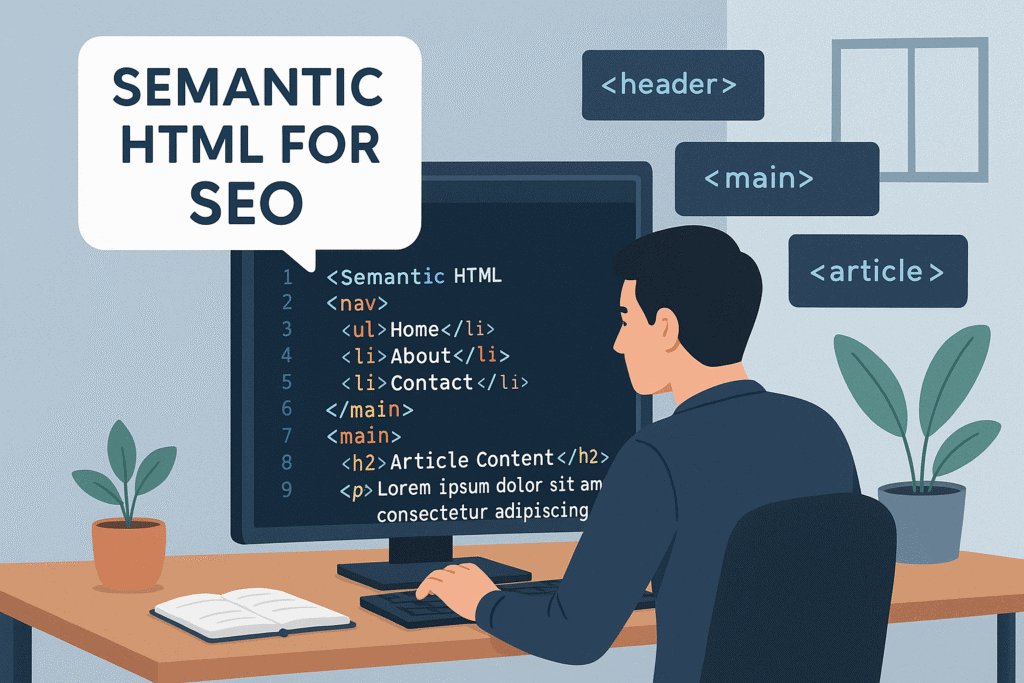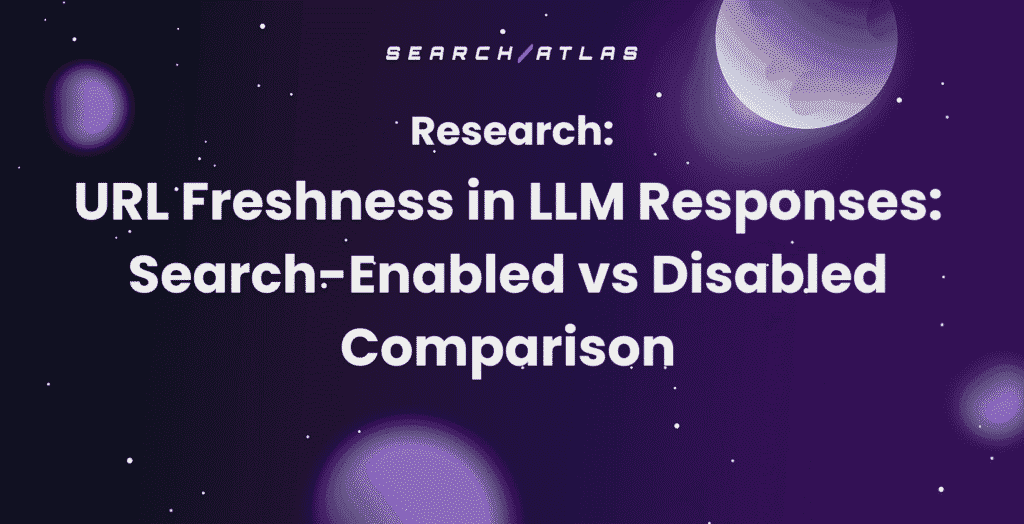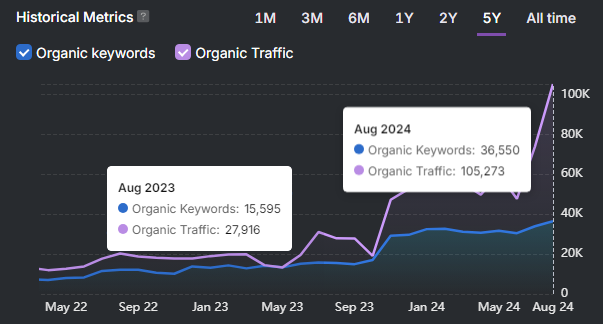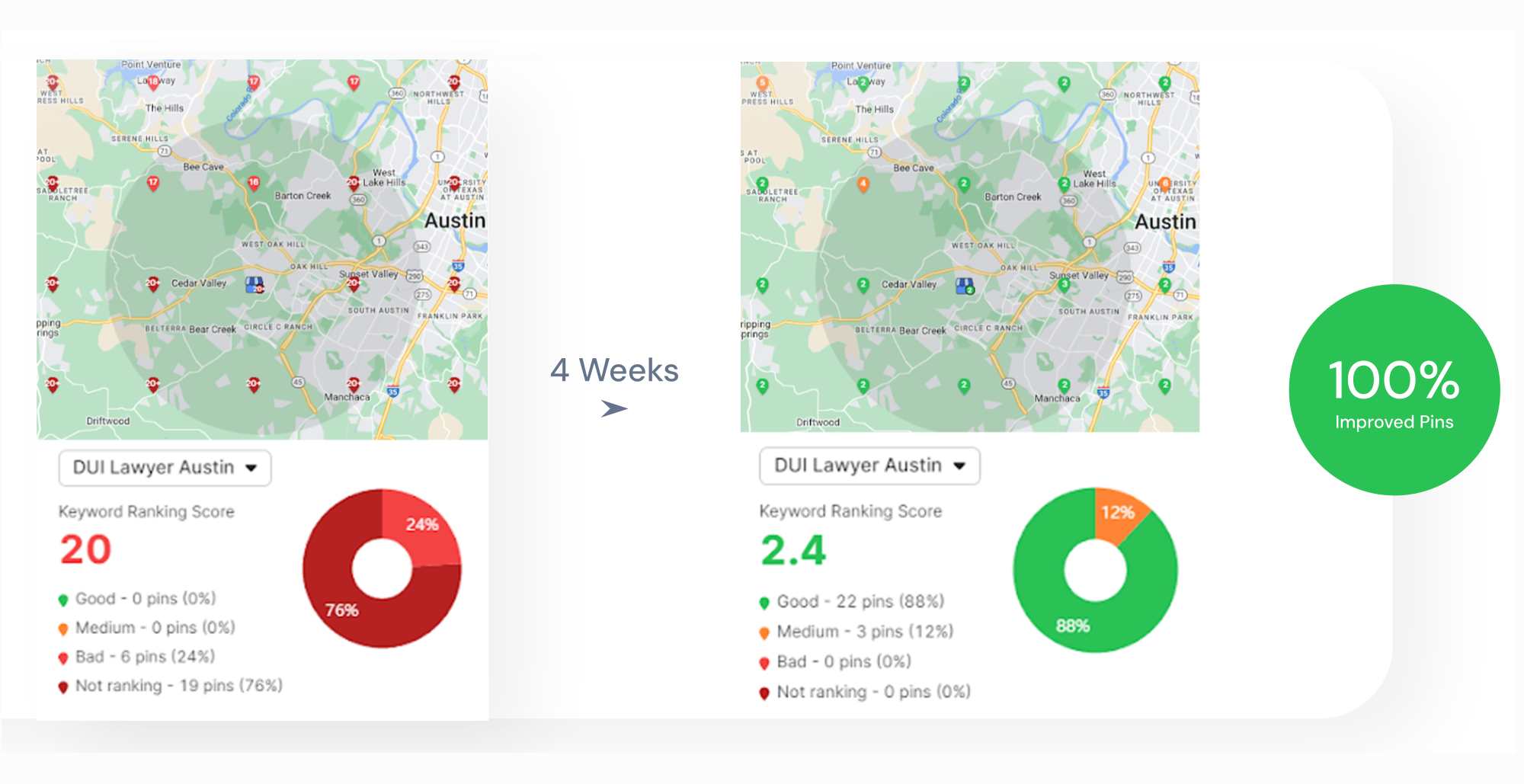Keyword stuffing refers to the practice of forcing too many keywords into a webpage. This tactic aims to manipulate search rankings. However, search engines have been penalizing this behavior for a long time.
Content optimization creates better results. Writers include keywords which match intent, sentences remain clear, and words flow naturally. Search engines reward clarity, relevance, and good user experience.
We explain keyword stuffing in more detail, and share examples and tips to avoid the harmful practice. Keep reading to learn more. 💡
What Is Keyword Stuffing?
Keyword stuffing is the practice of overloading a webpage with keywords in an unnatural way to manipulate search engine rankings. This spammy tactic goes against Google’s guidelines and often leads to penalties.
Keyword stuffing isn’t limited to text. Keyword stuffing appears in anchor texts, URLs, or lists of irrelevant locations and numbers. The practice worked in the early days of search engines when algorithms were simpler. However, modern search engines prioritize quality and relevance, which makes this outdated trick ineffective.
To succeed in search engine optimization today, focus on creating natural, engaging, and informative content that serves your audience, not just search engines.
Quality over quantity always wins! 🏆

What Are Some Examples of Keyword Stuffing?
We’re going to explore different examples of keyword stuffing to show you what to avoid and how it can harm your SEO.
Example 1: Overloaded Product Descriptions
An example of keyword stuffing in product description is, “Our fitness supplements boost energy. These fitness supplements help performance. Find the best fitness supplements for every fitness goal.” This repetition hurts readability and provides no real value to the user.
Example 2: Keyword-Stuffed Title Tags and Meta Descriptions
A title like “Fast Quick Delivery Service – Get Fast Shipping Now” with a description reading “Order now for fast delivery from our quick shipping service! We offer fast packages, fast couriers, fast shipping, and quick delivery options online” shows keyword stuffing in metadata.
Keyword stuffing in metadata confuses users and lowers ranking signals.
Example 3: URL Stuffing
A keyword-crammed URL looks like the one below.
https://www.example.com/fast-quick-speedy-shipping-delivery-service
It includes too many keywords and looks spammy. URLs need clear structure. Pages rank better with concise and relevant terms.
Example 4: Overuse of Anchor Text
Using anchor text like “fast quick express shipping services” in multiple links across a page creates keyword stuffing. Repeating exact phrases disrupts flow and signals manipulation.
Example 5: Excessive Alt Text
We show an example of an alt text that shows keyword stuffing below.
<img src="shipping-header.avif" alt="fast shipping, express delivery, quick shipping">.
The purpose of alt text is to support accessibility and SEO. Keyword overload weakens both.
How Does Keyword Stuffing Affect SEO?
Keyword stuffing is bad for SEO because it creates low-quality, spammy content that harms your rankings and SEO user experience (UX). 🙅
Violates Google’s Spam Policies
Keyword stuffing violates Google spam policies. Google applies penalties after it detects overuse of keywords or unnatural backlinks. These penalties remove the site from search results.
Worsens User Experience
Using too many keywords makes your content hard to read and turns users away. Google prioritizes content that is natural, valuable, and made for people—not just search engines. Your content is unlikely to rank well if you stuff a page with keywords.
Counts as Black-Hat SEO
Keyword stuffing is considered a black-hat SEO tactic, which means it’s an unethical practice. While it worked in the past, search engines continuously improve their search algorithms to spot and punish such practices.
Damages Brand Reputation
Keyword stuffing affects the perception of your brand. It makes you look unprofessional, which turns potential customers away.
Bottom line: Keyword stuffing lowers your rankings and pushes your website out of sight. Stick to quality content instead! 👍
How to Avoid Keyword Stuffing: 6 Simple Tips
We share 6 easy-to-apply tips to prevent keyword stuffing.
1. Add Related Terms to Make Content Natural
Don’t repeat the same term. Use synonyms, LSI keywords, Natural Language Processing Terms (NLP) terms, and keyword variations to make your content more natural and comprehensive. We explain the meaning of each below.
- LSI Keywords. They are related terms that help context, not exact synonyms. Example: For the keyword “apple,” potential LSI keywords include “fruit,” “orchard,” or “juice.”
- Secondary Keywords. They are related to the main keyword but are less important for ranking. Example: For a blog post about “healthy smoothies,” potential secondary keywords are “fruit smoothies.”
- NLP Terms. These are words or phrases that help Google understand the meaning and context of your content. Example: “best running shoes” → “comfortable running footwear,” “sneakers for runners.”
Search engines typically rank pages for a variety of related terms. It’s possible to rank for multiple relevant queries by focusing on providing value, So, sprinkle in secondary keywords and long-tail variations to give search engines more context and help users find your page using different search terms.
Long-tail keywords are multi-word phrases with lower search volume but higher intent. Long-tail keywords show Google that your content answers specific queries. Using synonyms signals relevance, which improves your rankings. 🔝
Focus on covering a topic comprehensively with related terms to show content value instead of optimizing for one keyword. One way to do this is to let an AI content assistant automatically find the best related terms, such as NLP terms. Using an AI content assistant fills your content with meaningful variations, which improves SEO naturally.
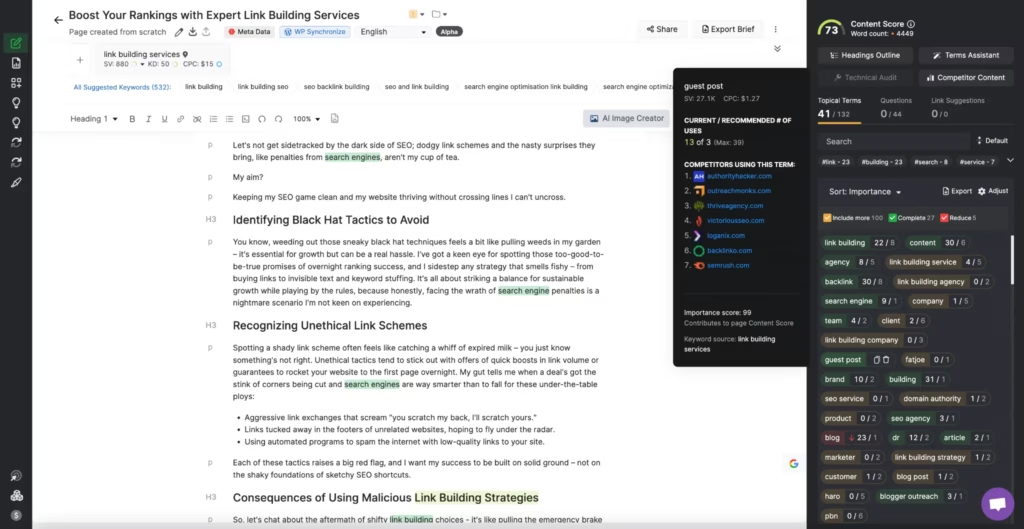
The AI content assistant automatically suggests related NLP terms for the keyword “link building services,” like “backlink,” “guest post,” “domain authority,” and others. It shows which of your competitors are using these related terms.
Your content becomes more natural and comprehensive when you pepper these synonyms and related terms into it.
2. Write Naturally to Captivate Readers
Your keywords take care of themselves when you write naturally. Your target keyword and its variations appear without feeling forced when you focus on creating clear, engaging content.
Overloading your text with the same phrase makes it awkward to read and unhelpful to your audience.
Let’s say your target keyword is “organic vegetable garden tips.”
Unnatural content
“If you want organic vegetable garden tips, this guide to organic vegetable garden tips will provide the best organic vegetable garden tips. Organic vegetable garden tips help you grow healthy vegetables naturally.”
Natural content
“Growing an organic vegetable garden requires smart tips to succeed. This guide offers practical advice for natural gardening that produces healthy vegetables. Use these tips to start your own garden with confidence.”
Notice how the second example uses the target keyword and related phrases naturally without repetition or force.
It’s more readable, helpful, and engaging for the audience!
3. Prioritize Your Audience to Address Their Needs
Focus on your audience first and consider their search intent.
Think about what they need, what questions they have, and how to help them. The keywords you need then naturally fit into your content without feeling forced.
On the other hand, some marketers write purely for SEO and forget about search intent. They overthink the keywords and end up stuffing them everywhere. That makes content less enjoyable to read and less useful.
Google wants content that’s helpful and easy for people to understand, so writing for your audience and aligning with their search intent actually helps your SEO in the long run.
Example: target keyword: “healthy meal prep ideas”
SEO-first writing (unnatural)
“Looking for healthy meal prep ideas? These healthy meal prep ideas will make your week easier. With these healthy meal prep ideas, you’ll eat healthy while saving time. Try these healthy meal prep ideas today!“
Audience-first writing (natural)
“Planning meals ahead can make eating nutritiously so much easier. In this guide, we’ll share healthy meal prep ideas to save you time and keep your diet on track. Whether you’re looking for quick lunches or make-ahead dinners, we’ve got tips and recipes to get you started.“
See the difference? The second version is more relatable and useful for readers.
4. Avoid Frequency Metrics to Stay Relevant
The idea of focusing on an ideal percentage for keyword density is outdated.
Google has evolved, and now it looks at multiple factors to assess content quality beyond just how many times a keyword appears.
Today, Google looks at much more than just keywords and NLP terms when evaluating your content. It considers a range of factors to determine if your page is truly valuable to users.
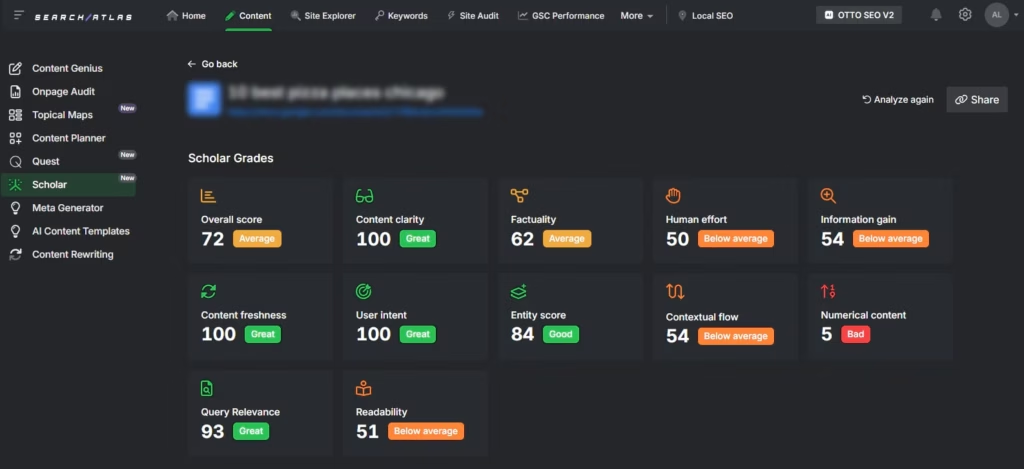
Scholar is a semantic-grader tool that reverse-engineers what Google takes into account. Scholar compares your content to the competition. The metrics it evaluates are listed below.
- Content Clarity. It analyzes sentence structure, reading level, and logical flow.
- Factuality. It measures how well the content aligns with its topic.
- Human Effort. It evaluates the level of human touch, originality, and care, including adding schema markup and images.
- Information Gain. It tests how much new insight the page offers compared to existing pages.
- Content Freshness. It detects whether the content reflects current information by reviewing timestamps, references, and publication signals.
- User Intent Alignment. It analyzes how well the page satisfies the searcher’s likely goal. The score drops if searchers want product comparisons and the page offers definitions.
- Entity Score. It looks for concepts relevant to the topic using Google’s Knowledge Graph..
- Contextual Flow. It measures if the page follows a logical structure and if subtopics are out of order or unrelated.
- Numerical Score. It looks at the presence, accuracy, and clarity of numerical data.
- Query Relevance. It checks how well your content aligns with the target keyword and URL.
- Readability. It measures the readability level and complexity of your content. It’s possible to improve this fast with readability tools.
The focus should be on creating high-quality, informative content that naturally includes your target keyword and related terms without obsessing over keyword frequency.
5. Add Keywords to Page Elements for Complete Optimization
To rank well for a specific keyword, optimize your page strategically instead of stuffing it into the content. Focus on key areas like the page title, meta description, subheadings, and image alt tags.
Structure your content with HTML heading tags (H1, H2, etc.) to improve readability and provide context for search engines.
For example, the target keyword is “choosing the best laptop.” Include the keyword naturally in your headings, intro, and conclusion. This signals to search engines that your page covers the topic thoroughly.
Beyond adding keywords properly, ensure the page layout meets user needs. For example, some “how to choose” guides benefit from interactive questionnaires that help users make decisions based on their preferences.
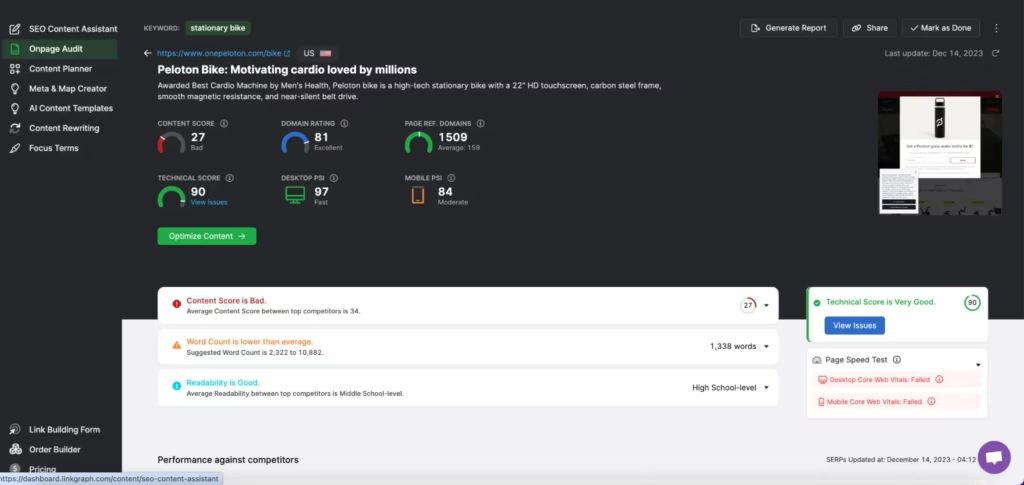
The Onpage Audit Tool gives you a detailed analysis of how keywords are used in each piece of content. The Onpage Audit Tool looks for on-page SEO features listed below.
- Keyword number and usage (prevents stuffing)
- Keywords in meta tags
- Keywords in headings
- Keywords in the text body
- Images and other multimedia
6. Mind How You Add Keywords to Backlink Anchor Text
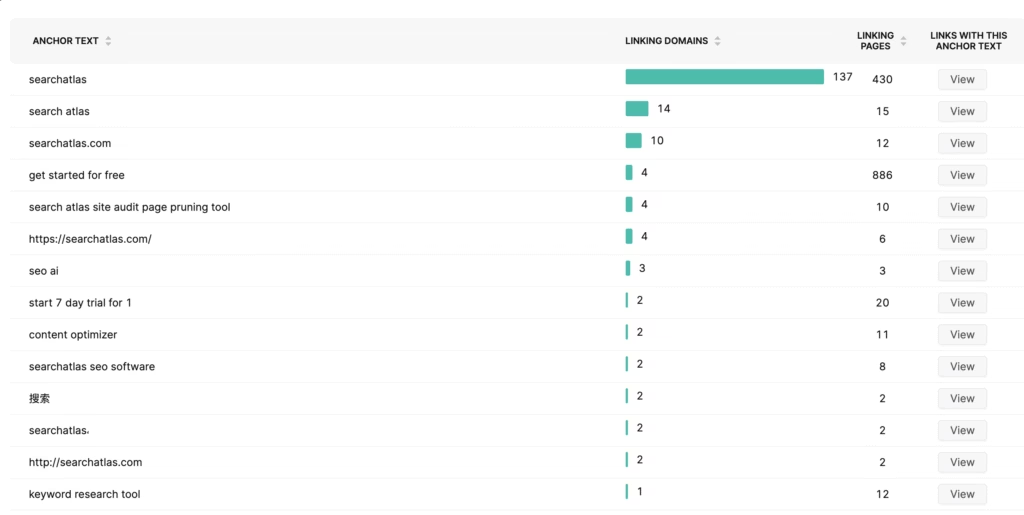
Anchor text influences how search engines interpret the linked page. Overuse of exact-match keywords triggers spam signals and weakens credibility. Use branded terms, partial-match phrases, or natural language to diversify anchors. For example, link the phrase “compare solar panel systems” instead of repeating “cheap solar panels” across all backlinks.
Avoid identical phrasing in every link. Varying anchor text builds trust and matches user behavior. Review backlink profiles with Backlink Analyzer to spot anchor text issues. Adjust links that repeat keywords without context. Build anchor diversity to support authority growth and maintain ranking stability.
7. Use AI Tools to Assess Website-Wide Keyword Optimization
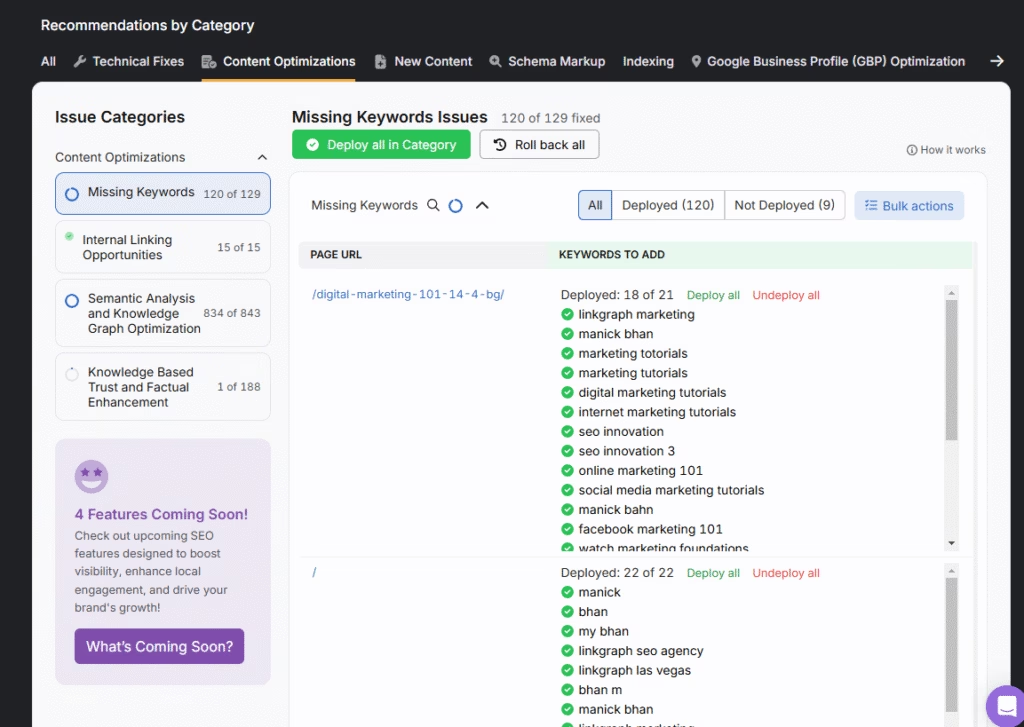
OTTO SEO is an AI agent that fixes on-page, technical, content, and other SEO issues with one click from the dashboard. It runs continuously and updates content health reports daily.
You preserve search visibility through daily monitoring, because OTTO SEO stays aligned with algorithm updates.
The system audits each page for missing keywords, incomplete metadata, broken or weak links, and poor optimization signals.
The OTTO SEO Dashboard includes a Content Optimization panel. In this panel, users check for issues such as those listed below.
- Missing keywords
- Internal linking opportunities
- Semantic analysis and knowledge graph optimization issues
- Knowledge-based trust and factual enhancement issues
8. Use Stop Words to Incorporate Keywords Naturally
Stop words are common words that search engines often ignore during indexing. Writers use stop words to make keyword phrases read naturally in content. For example, instead of writing “best iPhone case 2025,” write “the best iPhone case for 2025.”
This keeps the text smooth and human-readable while still targeting the keyword. Use stop words to reduce awkward phrasing without affecting keyword targeting or SEO effectiveness. Common stop words are listed below.
| at | by | from |
| of | on | to |
| in | that | this |
| which | whom | whose |
| what | why | how |
| with | who | where |
Frequently Asked Questions
In this section, we address some of the most frequently asked questions about keyword stuffing.
Does Keyword Stuffing Still Matter for SEO?
Keyword stuffing used to work when search engines focused on how often a keyword appeared. But now, with smarter algorithms, search engines easily spot keyword stuffing. It is considered a spammy tactic that hurts your rankings.
Is Keyword Stuffing a Ranking Factor Today?
Search engines no longer focus on keyword frequency to understand content. Today, quality content is key, and stuffing your page with keywords harms your rankings instead of helping.
How Much Keyword Usage Is Too Much?
There’s no exact limit, but it’s best to keep your keyword usage natural. If your content sounds forced or repetitive, it’s time to dial it back. Using related terms and secondary keywords is a way to prevent keyword stuffing.
What Happens if Google Detects Keyword Stuffing?
Keyword stuffing is against Google’s spam policies. Google penalizes your site by lowering its ranking or even removing it from search results when it detects keyword stuffing. These penalties can be applied automatically by Google’s algorithms or through a manual review.
Simplify Your SEO Efforts with the Right Tools
Keeping track of keyword stuffing, related keywords, NLP terms, LSI keywords, and more is challenging, especially when you’re focused on writing great content. It’s a delicate balance, and doing it manually is time-consuming.
Thankfully, there are many tools out there to help you stay on top of it all. 🙌
Search Atlas offers something that goes beyond the basics. Our platform has a powerful content assistant that automates content creation, optimizes for NLP terms, generates outlines, and even creates images. Plus, with Scholar, you see how Google views your content. Finally, with OTTO SEO and the Onpage Audit Tool, your website remains optimized through fast automation.
Why not try these innovative features for yourself? Get your free trial today!



